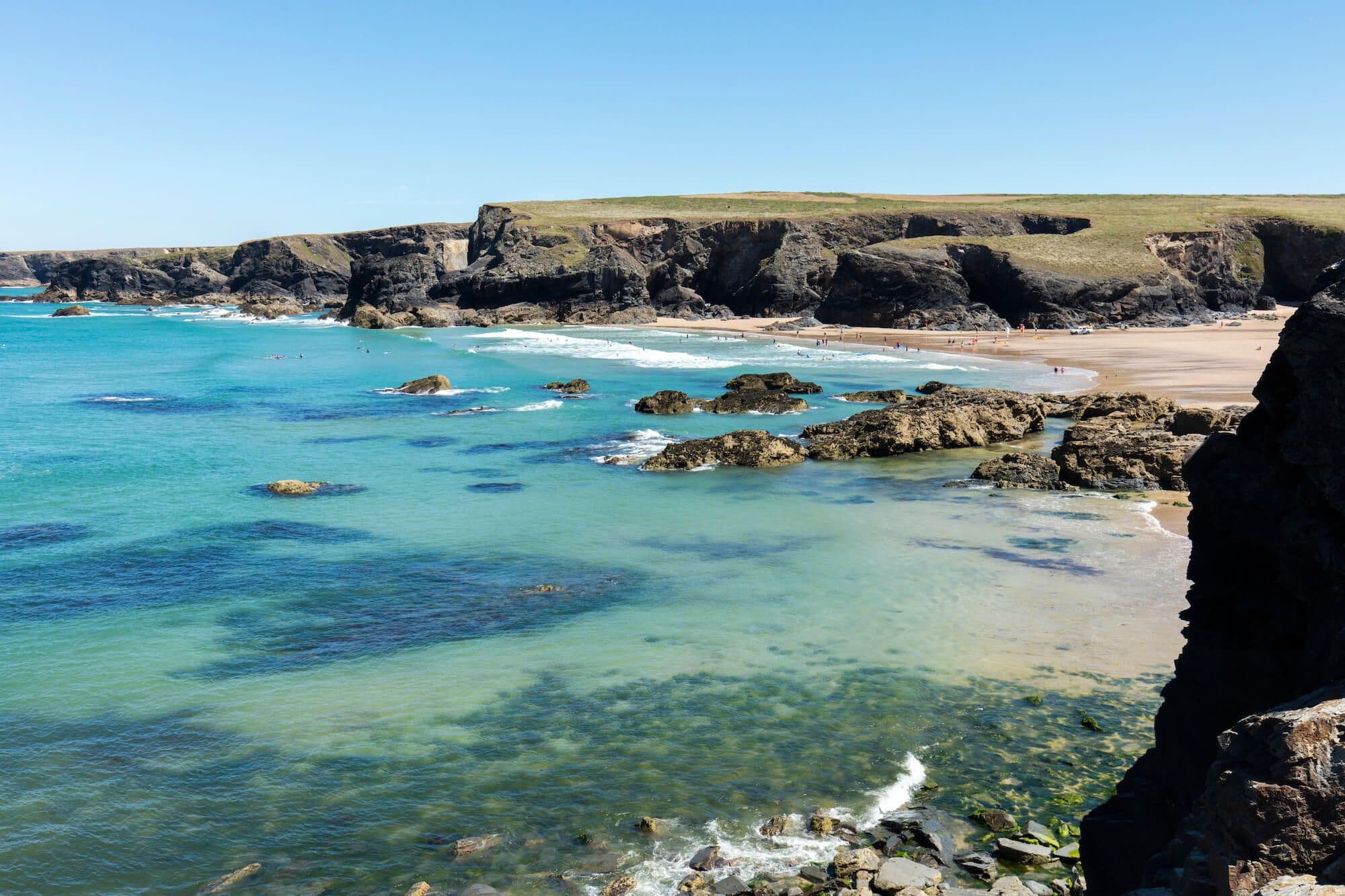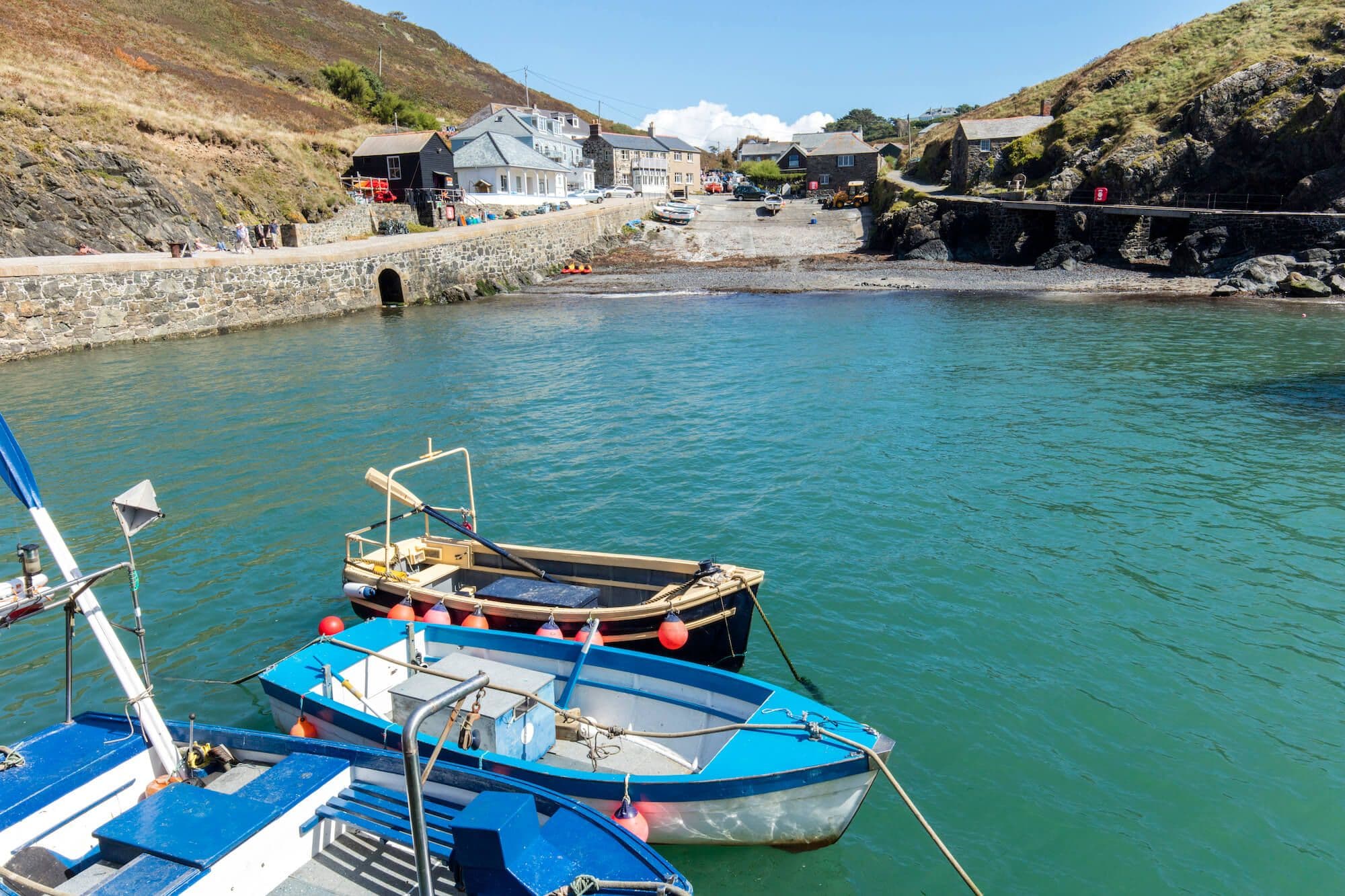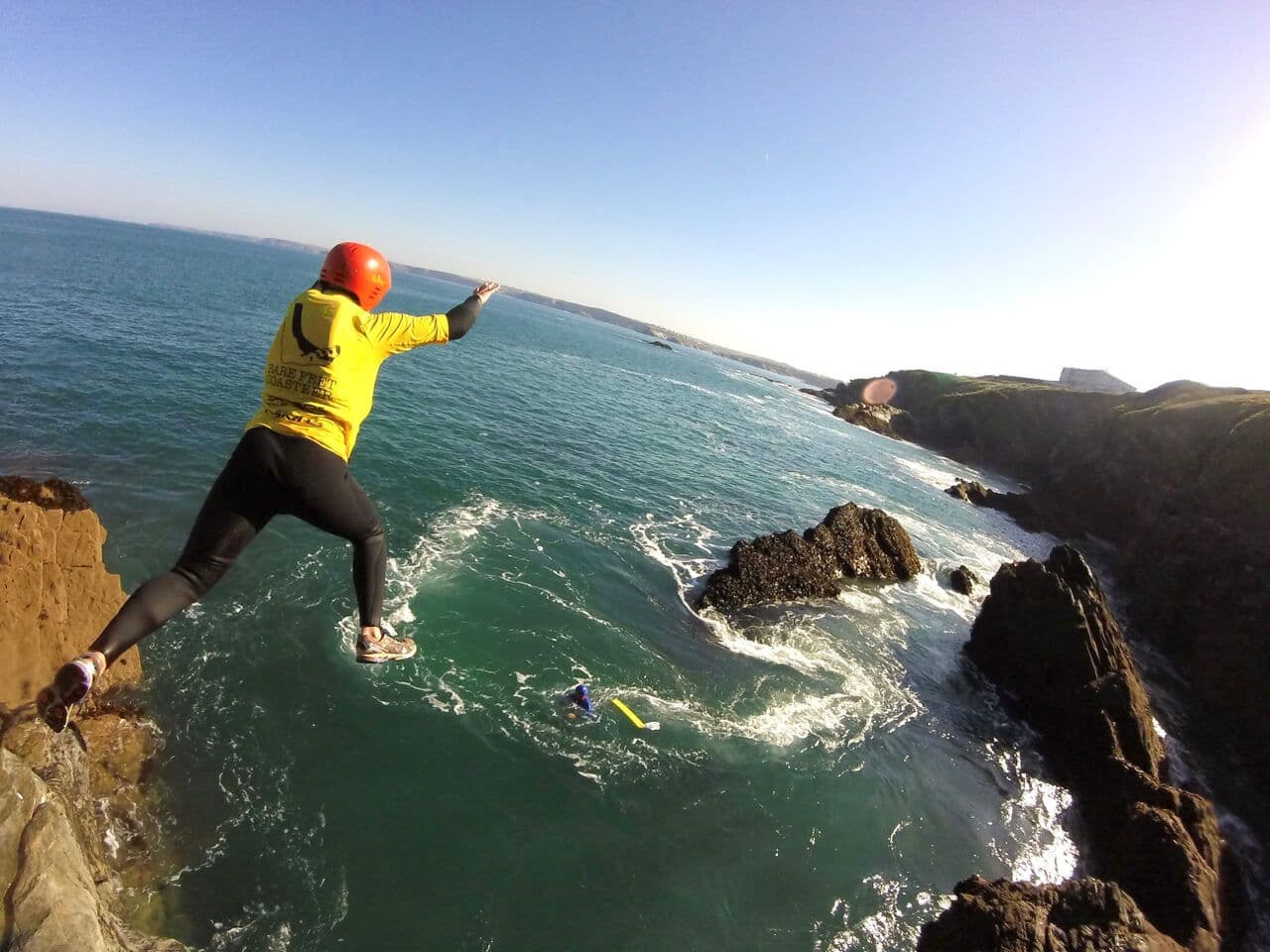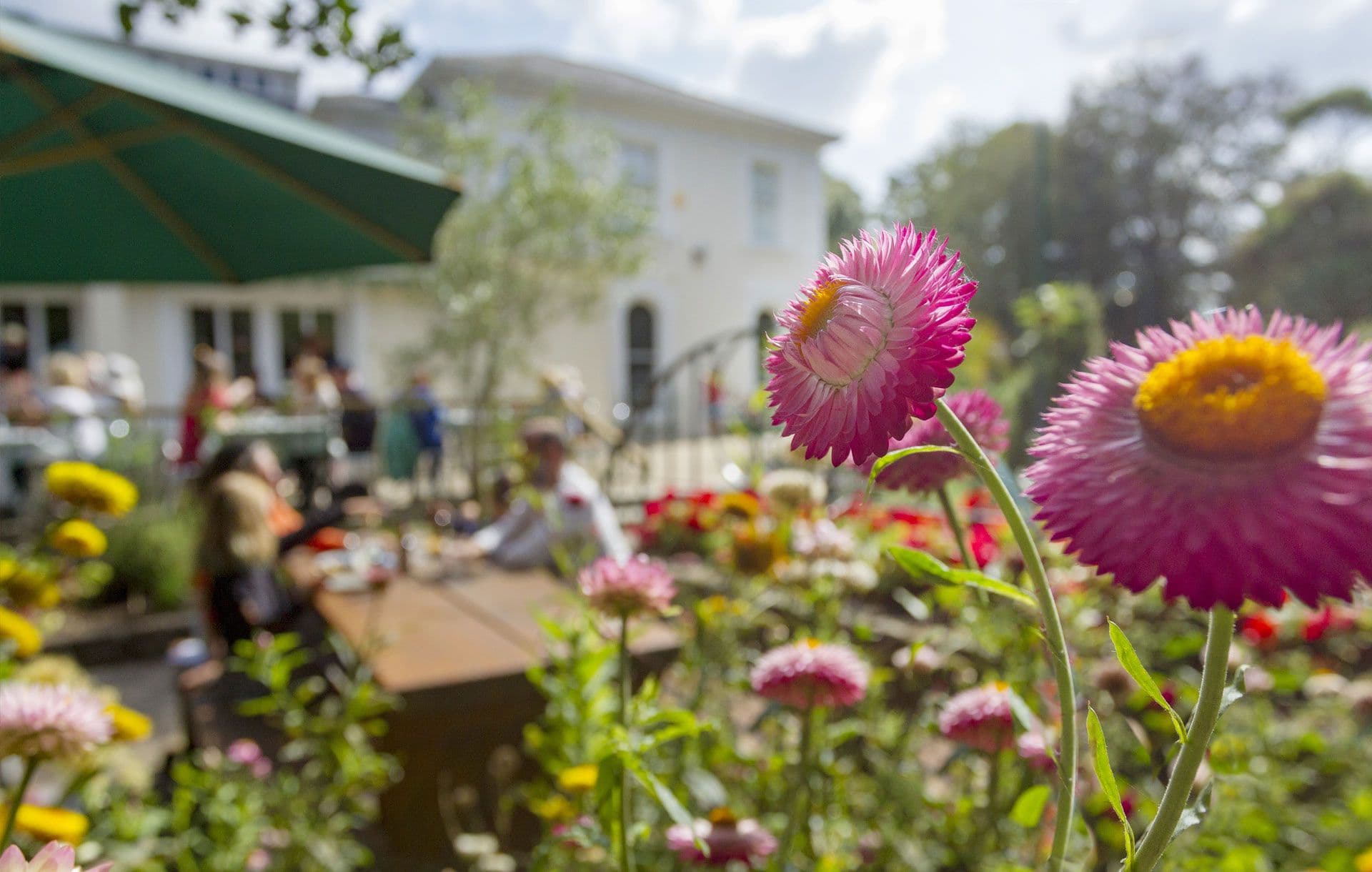The South Coast
Cornwall's Riviera
Swap cliffs for gentle hills, strong currents for clam estuaries, surfboards for paddleboards, and give Cornwall’s South Coast a chance. Its understated, quiet beauty might just turn your head…
Gentle is the best word to describe the South Coast of Cornwall. Cliffs aren’t steep and craggy, they just tend to roll down luxuriantly into calm, azure coves. Waves don’t crash, they ebb and flow, lapping onto the sands and tugging placidly at the smooth pebbles of the area’s beaches. Even the harbour towns hum with a muffled kind of energy, as fishermen pootle out into the mouths of estuaries in small boats to gather oysters and mussels.
Don’t take this slower pace of life to mean you can’t fill your holiday calendar here though. The miles of branching rivers and hidden creeks are a kayaker's heaven, taking you away from civilisation where only the sound of the birds disturbs the silence. Unspoilt beaches are a haven for families, inquisitive snorkellers and intrepid rockpoolers.
Away from the coast, the sheltered subtropical gardens of the region are the perfect way to spend a day, losing yourself in a colourful jungle of plants from all over the world. Or spend some time exploring the towns and villages that populate this relaxed part of Cornwall
Safe Harbours
Cornwall’s south coast is home to some of the best known harboursides in the country. From Falmouth to Fowey, Polperro to Portscatho, there’s a welcoming quayside wherever you decide to ‘drop anchor’. Falmouth has for centuries guarded the entrance to the River Fal and today is one of Cornwall’s most culturally and gastronomically diverse urban centres, partly due to having a university on its outskirts, but also because it’s a very popular tourist destination. With wonderful beaches, and hotels, it’s also, along with St Mawes and other villages up stream, Cornwall’s yachting mecca.
Travel up the coast, and the wonders of the Roseland Peninsula are probably some of the most guarded in Cornwall, and for good reason. Whilst St. Mawes might appear on the radar of many visitors, and Portscatho might sound vaguely familiar, the rest of the area is largely unexplored and retains a hushed and pastoral grandeur, with gems like St. Just in Roseland, Portloe, Tregony and Veryan well worth taking a detour off the beaten track to pass a peaceful few days in.
At the eastern end of the Roseland, Gorran Haven and Mevagissey retain their Cornish charm, the latter still a vibrant fishing harbour with the added attraction of having The Lost Gardens of Heligan as a near neighbour. Sitting on the edge of St Austell Bay, they are only a short drive from the Pentewan Valley where there are any number of holiday parks and the historic port of Charlestown. St Austell itself is famed for its brewery and its links with the China Clay industry which looms large in the hinterland beyond the town. The Eden Project is close by, a must for any visit to Cornwall.
As you move further east, the deep harbour at Fowey is another well known destination, with its literary links. The river, running down from high on Bodmin Moor, is a wonderful playground for those who enjoy ‘messing about in boats’ with countless creeks to explore all the way up to Lostwithiel. Picturesque Polperro is a few miles up the coast, as is Looe, a family friendly destination that is also still a working harbour. A place to spend the day on the beach before dining out on fresh fish in the evening.
And so to Whitsand Bay, the two villages of Seaton and Downderry are quietly becoming popular as places to stay, away from the hustle and bustle of better known parts of Cornwall. The bay sweeps around to Portwrinkle, overlooked by the challenging golfcourse, and onto the cliffside communities of Freathy and Treganhawke, in Cornwall’s forgotten corner.
Coves & Gardens
The smaller, quieter beaches are a haven for families, inquisitive snorkellers and intrepid rockpoolers. Many can only be reached after a walk along the South West Coast Path, making them more exclusive, take a picnic and spend the day in glorious seclusion. Of course, we won’t be telling you where these hidden coves are as that would defeat to object!
The South West Coast Path is by far the best way to explore the whole of Cornwall’s coastline, not just to reach secret beaches! Some will want the challenge of walking the whole thing, but many will be happy to just do and hour or two. On the south coast there are some very popular sections, such as Looe to Polperro, around the Gribben Head from Fowey and out around St Antony’s Head at the mouth of the Fal estuary. These can all be completed in a roundtrip or by using public transport.
If you prefer to be on the water, the miles of branching rivers and hidden creeks, snaking inland, are a kayaker's heaven, taking you away from civilisation where only the sound of the birds disturbs the silence. Both the Fal and the Fowey offer a huge variety of waterways to explore and if you don’t have your own craft there are companies who will guide you to lesser-known secret spots.
The South Coast’s shelter from the infamous Cornish gales means that it's a fantastic place to experience Cornwall’s unique sub-tropical flora and fauna, being home to some of the UKs best renowned gardens. Top of your list should be The Lost Gardens of Heligan, expertly maintained to retain an air of magic and mystery that make visitors feel like they’re stepping back into a time long-forgotten. Make sure to also head south and visit Trebah Gardens, especially in the summer, when the Gunnera Passage towers over you to prehistoric proportions, and the resplendent Glendurgan, where the wildflower-blanketed valleys lead you down to a peaceful beach for an afternoon of skimming stones. Whilst not always in the guidebooks, set aside time for the woodland walk of Trelissick Gardens, the Pinetum Gardens near St Austell and the magnificent magnolia collection at Caerhays Castle.
Where to stay
Why not stay a little longer and explore everything this captivating region has to offer? Discover charming guest houses and quality holiday parks, quaint country hotels and stunning seaside bolt holes.
Things to do
Plan your next adventure and find things to do on the South Coast. From glorious gardens and historic sites, to adrenaline filled attractions and fascinating museums; there really is something for everyone.
FAQs
View allCornwall's south coast tends to be quieter than the north with its vast sandy beaches and great surf. Instead you will find picturesque fishing villages, and the occasional sandy cove. Families can still enjoy a traditional “bucket-and-spade” holiday at places like Looe or Pentewan, whilst others might prefer the yachting meccas of Fowey, Falmouth or St Mawes.
With beautiful scenery around every corner and vibrant towns and villages full of great places to eat and drink, we are sure you will want to return again and again to the south coast of Cornwall.
That all depends on what you are looking for? North Cornwall tends to be wilder, rugged cliffs, long sandy windswept beaches, a land of myth's and legends...
The south coast is gentler, historic fishing villages, small sheltered coves and green fields running down to the water's edge.
Whichever coast you choose, you will receive a warm welcome, and if you do get bored, it's never much more than an hour's drive from one side to the other.
The main towns are St Austell and Falmouth, but smaller towns and villages include Saltash, Looe, Polperro, Liskeard, Lostwithiel, Fowey, Mevagissey and St Mawes.
Some people even include the city of Truro in south Cornwall, and we wouldn't argue.
The general rule is anywhere south of Bodmin Moor and the A30, until you get into West Cornwall, for example Penzance is on the south coast but is in West Cornwall.
Yes... loads!
The mild climate caused by the Gulf steam means the south side of Cornwall has some fantatstic gardens to visit. Perhaps the best known are the Lost Gardens of Heligan near Mevagissey. Come in the spring and be blown away by the colours...
Down near Falmouth there's Trebah and Glendurgan, sitting side by side and running down valleys to the Helford Passage, there a must if your in that area.
Smaller gardens such as Pinetum Park and the Hidden Garden are on the outskirts of St Austell. as is the Eden Project, not technically a garden, more a environmental wonderland!
And if you're in the far east of Cornwall, a visit to Mt Edgcumbe Country Park should be on your list, and allow a day to do the place justice. The formal gardens are amazing, and then there's the deerpark and all the rest of the surrounding countryside.
Dogs are allowed on Castle Beach, Gyllyngnvase Beach, Swanpool Beach & Meanporth all year except from 1st July - 31st August when then are not allowed between 10am - 6pm.
**According to MagicSeaweed.com **
Whitsand Bay is good for surfing when a swell rolls in from the west. Good banks can be found all along the bay but are best below Freathy where the beach is watched over by lifeguards.
Access to the area below Tregantle Fort is regulated by the military (firing range) and closed when red flags flying.
Best from low to mid tide. September - February are best when the big swells roll into the Channel.
Parking and access can be tricky with only a few small car parks set back from the beach.
Beware of rip currents, especially for beginners.
Of course! The city is famous for its ancient, cobbled and narrow streets with a range of stunning architecture featuring Gothic and Georgian styles. Central to the city centre is the Victorian Cathedral whilst all around it are a selection of independent shops, cafe's and restaurants.
With a recently refurbished theatre, cinema and loads of lovely pubs, Truro is a great place to spend a night or two, with the added bonus that it's no distance to drive to a beach during the day, either of the north or south coast.

Your weekly dose of Cornish cheer!
When you can’t be in your favourite place all the time, catch up on the latest stories, upcoming events, holiday ideas, and offers with a newsletter straight to your inbox. Terms and Conditions / GDPR compliance: by providing personally identifiable information Visit Cornwall will use it to provide you with ongoing information about their products and services. No one from Visit Cornwall will rent, sell or lease this personally identifiable information to other companies or individuals.
Stay connected
Find us on socials and stay connected with the Cornwall you love.
We use cookies to personalise content and ads and to analyse our traffic. You consent to our cookies if you continue to use our website. (Privacy Policy)











